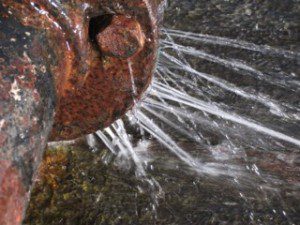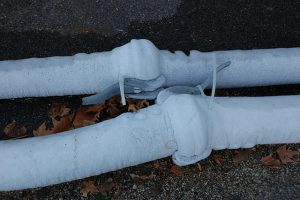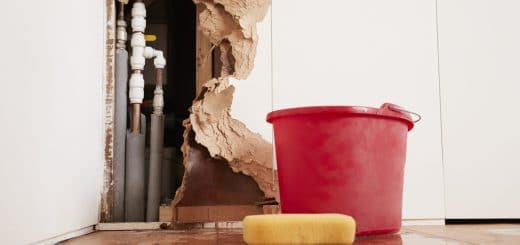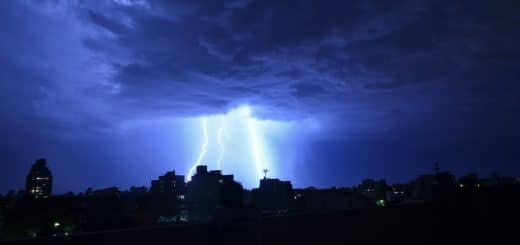Can Pipes Freeze in Desert Climates?
Winter is on its way, and those living in the desert don’t have to worry nearly as much as those in the northern states about the effects of winter weather. But this doesn’t mean there’s nothing to worry about. While there indeed won’t be sub-zero temperatures, snow, or blizzards, pipes can still freeze as temperatures still do fall below freezing on occasion.
There are steps you should take to prevent your pipes from freezing as almost 250,000 homes are ruined each winter due to pipes freezing and bursting. Thankfully, local restorationRestoration is the process of returning a property to its pr... More companies are always available to respond with frozen and burst pipe damage restoration, however, it’s best to avoid this situation altogether.
Frozen Pipes in the Desert
Water is one of the most unique elements in the world; there’s simply nothing else like it. Usually it doesn’t pose a problem, but if it freezes inside the pipes, there’s an immediate problem.
When the water inside the pipes freezes, it expands from the inside, adding pressure from within. Eventually the pipe may develop a crack or fissure, which causes the burst and sends water everywhere. The worst part of it all is that you may not even notice until long after the water has spread, which can result in very expensive restorationRestoration is the process of returning a property to its pr... More costs.
Preventing Frozen Pipes
Thankfully, temperatures must drop below freezing for pipes to freeze, but as soon as they do, don’t hesitate to take action. For a house located in the desert, it shouldn’t be too difficult to thaw them out.
Simply cranking up the thermostatA thermostat is a device that monitors and regulates tempera... More and allowing warm air to circulate around them should do the trick. You should also be aware of the pipes outside your home. If you don’t use them often, you can simply drain them and turn off their source of water. Otherwise you may consider installing “pipe sleeves” which can provide some insulationInsulation is a material used in buildings to reduce the tra... More during the colder temperatures.
Where Frozen Pipes are Most Common
While frozen pipes can occur anywhere with freezing temperatures, specific areas of the home will face a higher risk than others. These areas include the attic, crawlspaces, basement, under kitchen sinks, garages, and outside. Because these areas are uninsulated or don’t have as much contact with warm air as those in your bathroom or bedrooms for example, they face a higher risk for freezing.
How to Locate Frozen Pipes
There are many pipes in the home, so it’s not always easy to find those that are frozen. Here are some steps you can take to narrow down your search:
- Turn on all the faucets in your home and see where water doesn’t come out. If none of the pipes are running, the frozen pipe will most likely be located near the water meter. Inspect those pipes carefully for frost or if they feel cold to the touch.
- Check the common areas listed above to quickly find any frozen pipes
How to Thaw Frozen Pipes
If a pipe freezes but has not yet burst, you still have some time to save your home from a major mess. While thawing out the pipe, leave the faucet open to allow warm water to push the ice through the pipe. Then apply heat directly to the pipe, using a hairdryer, space heater, warm wet towel, or heating padThe pad is the cushion or underlayment beneath carpet that p... More. Just never use an open flame as it’s a dangerous fire hazard.
If you have any pipes with cracks or fissures, call your local plumber to have them fixed right away.
Thawing a Frozen Pipe Behind a Wall
Pipes located behind walls often present more of a challenge to thaw, but it’s still possible to do so. Check out these tips:
- Turn up the heat in the home to 80 degrees, opening all cabinets and closets to allow the warm air to flow throughout the home. Wait for a few hours.
- Use an infrared lamp to heat the area behind the wall where the frozen pipe is located.
- Use a fan heater to blow warm air into the air vent. Warm air from the home can help melt the ice on your frozen pipe.
- Cut out the drywall to access the frozen pipes and proceed with using any of the steps listed above to thaw the pipe.
If you’re not sure where the pipe is located behind the wall, or if the area is not accessible, don’t hesitate to contact your local plumber.

If you have any pipes with cracks or fissures, call your local plumber to have them fixed right away.
What to Do After a Pipe Has Burst
If the pipe has already burst and water is spreading, quickly locate the main water shutoff valve and turn it off right away to cut off the source. Then call your local restorationRestoration is the process of returning a property to its pr... More company for emergency water damage restoration services. Many are available within 30 minutes distance and will respond right away to your first call.
Using water extraction equipment, air movers and dehumidifiers, they will remove any standing water from the affected areas, dry out the wet spaces and apply anti-microbials to prevent moldMold is a type of fungus that grows in damp or humid conditi... More growth. If moldMold is a type of fungus that grows in damp or humid conditi... More has already started to develop, they can also provide moldMold is a type of fungus that grows in damp or humid conditi... More removal services.
Finally, any soiled porousPorous describes a material that contains small openings or ... More materials will be removed and replaced with new drywall, insulationInsulation is a material used in buildings to reduce the tra... More, carpeting and/or flooring to fully restore your home to its original condition. If the damage is covered under your insurance company, they will also work with your adjuster during the claims process for additional peace of mind.
Next time, you’ll just want to be more weary of freezing temperatures in the desert and understand their risks, especially for those who just moved to the area.
Are Frozen Pipes Covered by Insurance?
Depending on the situation, a frozen pipe may or may not be covered under insurance. Usually, if the heat is turned on in the building and the internal temperature is above 55 degrees Fahrenheit, then you should be covered. But just be sure to read your insurance policy or call your insurance agent for answers to specific questions.













